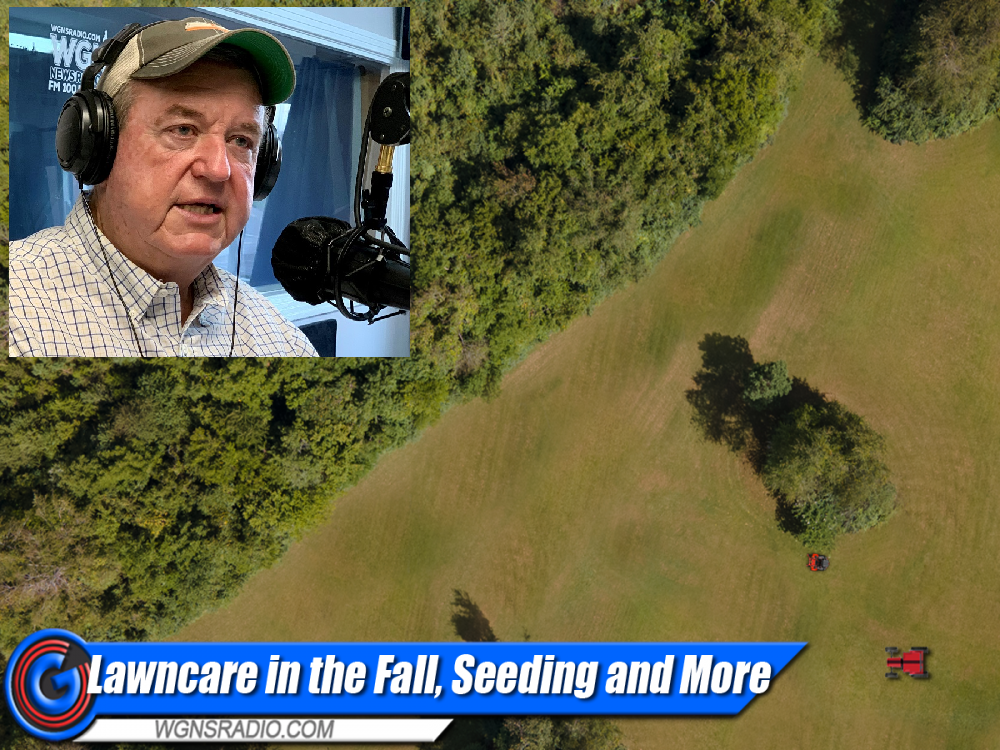(MURFREESBORO) As the heat of summer lingers and we move slowly into the fall season, gardens can often look dull, tired and tattered. The blooms of many beloved summer favorites (lilies, daylilies, and coneflowers, just to name a few) have faded, leaving gardeners longing for a flash of late season color to rejuvenate spirits. That's why you need to attend the free LAWN CARE FIELD DAY. It's not this Saturday morning, but the next one--September 9, 2023 from 9:00-11:00AM at the Lane Agri-Park (315 John R. Rice Boulevard). Although it's free, they need to know that you're coming so there will be enough supplies. Phone 615-898-7710 and confirm your attendance.
Mitchell Mote, they guy you hear on the radio, will be teaching. He noted that it's planned as an outdoor event, but in the event of rain--it will be held in the auditorium.
Mote continued, "The LAWN CARE FIELD DAY will show you how to properly complete fall fertilization of cool season grasses, along with fall and winter weed control and more!"
Another beauty is the vibrant perennial, goldenrod (Solidago). It can fill the gap between summer and frost with its golden blossoms and might be just the answer for weary fall gardens. There are nearly 100 species of Solidago, and many of them are native to North America.
While goldenrod has long been considered a weedy plant best relegated to roadsides and wild spaces, there are native species and improved hybrids that can fit well into the home garden. A plant evaluation study conducted by Chicago Botanic Garden compared the landscape performance of 25 species and garden hybrids. Evaluated traits included disease resistance (powdery mildew and rust), bloom coverage, flowering period, hardiness and habit. Among the best performers were Solidago ‘Baby Sun’, Solidago ‘Goldkind’, Solidago flexicaulis ‘Variegata’, Solidago sphacelate ‘Golden Fleece’ and Solidago rigida. The overall standout was Solidago rugosa ‘Fireworks’. Its consistent disease resistance coupled with its clumping nature, small stature and reliable blooms that resemble sprays of fireworks has earned this cultivar a well-deserved place in ornamental landscapes. There have since been numerous cultivars introduced (‘Cloth of Gold’, ‘Golden Baby’ and ‘Crown of Rays’) that continue to build on characteristics that are desirable for home landscapes such as clumping growth habit, compact height, clean foliage and bountiful floral display.
While Solidago species can be found growing naturally in diverse habitats, each species has specific environmental preferences. Those most used in landscape settings prefer full sun, average soil and have a clumping or slowly spreading rhizomatous root system. Goldenrod is a herbaceous perennial adaptable to poor soil, tolerant of drought once established and has potential to reseed. Goldenrods blooms between late summer and fall providing a much-needed source of late season nectar for many beneficial insects. Just as nature provides a compilation of flowering plants throughout the growing season, home gardens can mimic nature’s sequential bloom patterns to ensure nectar and pollen provisions during this time of year when blooms can be sparse. Perennial companions to plant alongside goldenrod for late summer and fall interest include aromatic aster, New England aster, ironweed, Joe-Pye weed, beautyberry, rudbeckia and salvia.
Goldenrod is often mistakenly blamed as the trigger of seasonal allergies, but the true offender is ragweed, a plant with less showy flowers that is inconspicuously blooming at the same time as goldenrod. The pollen produced by goldenrod flowers is too heavy to be carried in the wind and not the cause of dreaded hay fever. Don’t let false accusations and weedy reputations deter you. I encourage you to “Grow on the Wild Side” and include goldenrod in your garden this fall.
Again, phone the Lane Agri-Park and sign-up to attend the free LAWN CARE FIELD DAY from 9:00-11:00AM on Saturday morning, September 9, 2023--that's not this Saturday...but the next one! Again, Phone 615-898-7710 and confirm your attendance.





